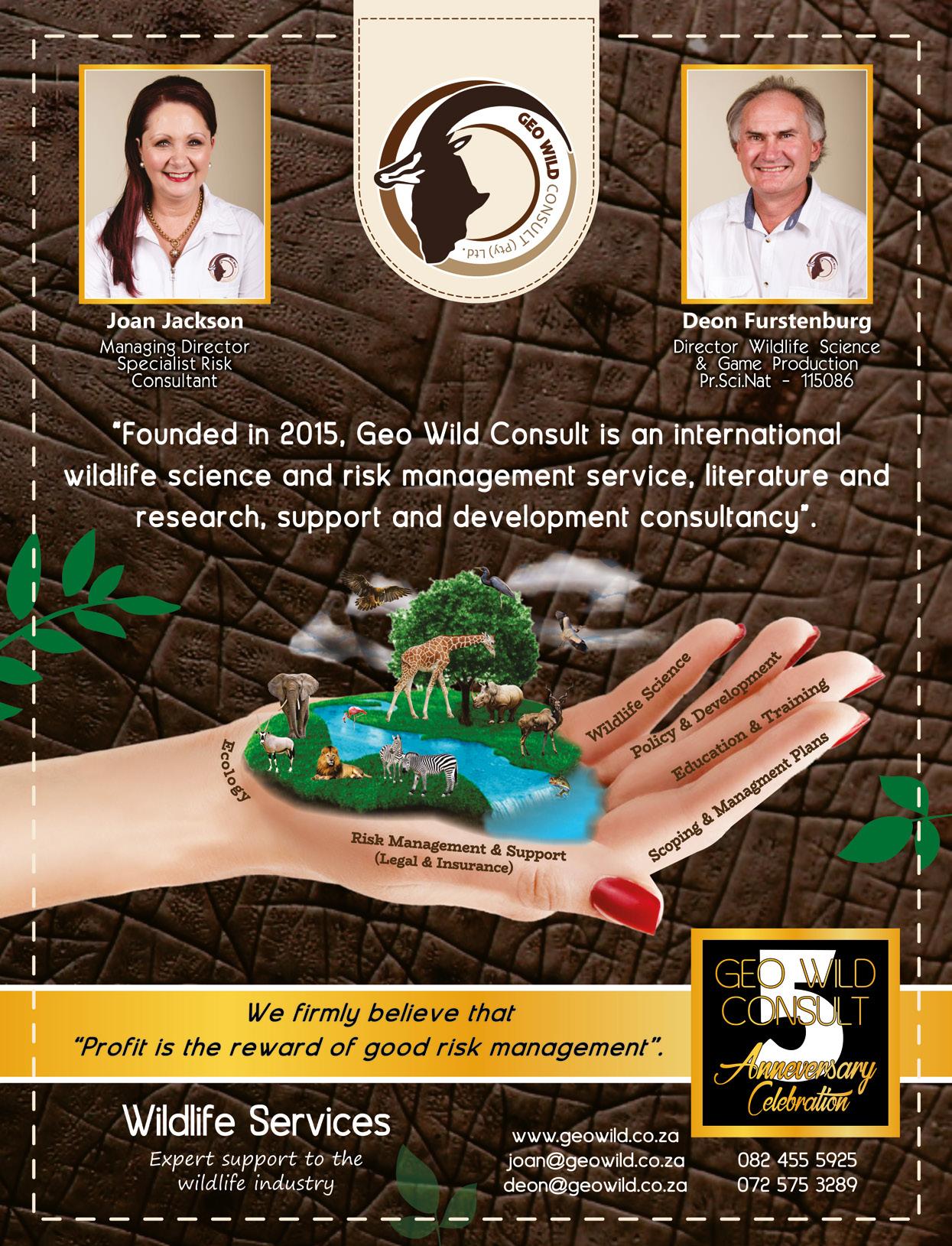
15 minute read
NUTRITION Holistic management solutions
Photo © Gudkov Andrey.
Management Solutions
Advertisement
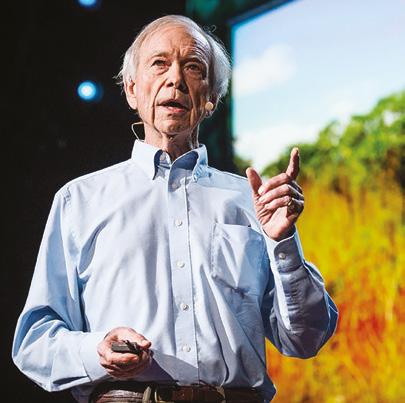
An interview with Allan Savory
Allan Savory
A
llan Savory was born in 1935 in the then Rhodesia. He is an ecologist, environmentalist and global consultant, the pioneer of Holistic Management, a process that helps ranchers and farmers to better manage resources by planning for and integrating all social, economic and environmental factors. He is president and co-founder of The Savory Institute (“SI”), which focuses on holistic management through special projects around the world.
Our executive team posed some questions to Allan about his work and what it means for conservation today.
Could you give us some background on your first holistic management breakthrough in Zimbabwe?
Allan Savory: There was no single ‘aha’ moment. From my earliest concerns about the environmental degradation in the Northern Rhodesian Game Department in the 1950s until we broke through in 1984 with Holistic Management, it was a struggle until we could ensure consistent results, but I was determined to solve the problem of seemingly inevitable desertification.
My earliest observation was that the healthiest land was where we had the most intact wildlife populations with large herds of buffalo and elephant and many lions and other predators. I learned much from a ‘drought’ in the Limpopo basin and Tuli Circle in the early 1960s. As the research officer responsible, I watched some 50 000 head of
Scan the QR code or visit www.youtube.com/ watch?v=vpTHi7O66pI to watch the video: ‘How to green the world’s deserts and reverse climate change | Allan Savory’. Produced by TED Talks.
game die because of ‘drought’, but the International Red Cross was collecting money in Bulawayo for flood victims in Mozambique. It did not make sense that the drought in the upper Limpopo in South Africa, Botswana and Rhodesia produced the floods in Mozambique. From that, I was able to develop the concept of effective versus non-effective rainfall, so vital to understanding global desertification. Only now, almost 50 years later, is this beginning to be taught in universities.
What does ranching for profit mean to you?
Allan Savory: This was a derivation of my work in about 1982, before Holistic Management. While it helped some ranchers, I wouldn’t recommend it to anyone concerned with the future of wildlife; it doesn’t address the cause of flawed management and policies. “I was able to develop the concept of effective versus non-effective rainfall, so vital to understanding global desertification. Only now, almost 50 years later, is this beginning to be taught in universities.”


Photo © Gudkov Andrey.
The Zambezi National Park river bank destruction and loss of biodiversity on what were stable banks covered with vegetation in my youth. The Zambezi National Park is a national park located upstream from the Victoria Falls on the Zambezi River in Zimbabwe. It was split off from the Victoria Falls National Park in 1979 and is 56 000 hectares (140 000 acres) in size.

What is the significance of your studies in terms of the management of natural veld conditions?
Allan Savory: What we call ‘veld’ occurs in brittle environments, regions with long dry periods, and where grass provides most of the soil cover – about two thirds of the world’s land. In all environments, soil, soil life and plant and animal life co-evolved; in the brittle environments, this included much higher numbers of large grazing animals and their predators than we can even imagine today. When a high percentage of the soil between grass plants becomes bare, the available rainfall loses effectiveness – the beginning of desertification. In perennially humid environments, soil remains covered between plants despite bad management, but not so in the vast brittle environments, including southern Africa. Contrary to our beliefs, too few animals are a major reason here for bare soil between plants and subsequent desertification.
In the veld, only three things have been found to lead to millions of hectares of largely bare soil between plants. The first is ‘partial rest’, resulting from too few large grazing animals spread out and unbunched. The second is overgrazing of plants by too few animals, with insufficient movement. The third is burning, which always exposes soil. All three have been standard practices worldwide, and so the extent of global desertification and increasing frequency and severity of droughts and floods is not mysterious. Tragically, burning has been the standard answer to dying grasslands, to provide a green flush of grass for wildlife.
Partial rest is a counter-intuitive concept. Picture the boundary of a national park in the USA. On one side of the fence, all livestock has been removed for some 80 years, with vast sums of money spent on soil conservation, even restricting people to walking on paths to protect the algae crusting the soil. This is supported by most people and institutions. On the other side, we have ignorance, greed and stupidity with people overgrazing and overstocking, mainly sheep and cattle, with no soil erosion control. The outcome is the same because the main influence on the land is rest – total on the park side (no animals or their trampling, dunging, urinating and grazing), partial on the native community side (overgrazing of plants and too few animals scattered too widely to impact the land and trample the soil or lay down litter to cover soil). Both result
in severe desertification and loss of biodiversity. The significance of my work is greater understanding of the role of large grazing animals and their predators in the world’s brittle environments.
How will the Savory Institute take your work into the future?
Allan Savory: Through a global network of locally led and managed Holistic Management hubs connected through SI as one node in this network. There are currently about 30 such hubs, from Patagonia to Canada, South Africa to Sweden, Turkey and Australia, with more forming as I write. Millions of hectares of land are now being managed holistically on six continents. The first of these global hubs was the Africa Centre for Holistic Management near the Victoria Falls and the first South Africa hub has formed in the Cape. Michigan State University in the USA is the first university-led hub.
Reductionist land management cannot continue as it is; it needs to be holistic. Leadership in counterintuitive thinking can only come from ordinary people, and never from any organisation or institution, and that is now happening with the Holistic Management hub movement. Farmers, ranchers, pastoralists, researchers and people in government agencies are all collaborating. Millions of people worried about the quality of their food are joining in. More recently, the fashion industry seeing their role in ensuring that natural fibres are produced in a truly regenerative manner – regenerating the soil, soil life, biodiversity and communities and economies. This is not unlike the wildlife ranching industry that did not arise from any leadership from any institutions but by ordinary people seeing that it made sense.
How do you view current global conservation initiatives, and which are likely to succeed?
Allan Savory: Leaving nature to restore biodiversity is the most powerful action we can take in humid or near-perennially humid environments. This is why we find the ruins of past civilisations in these regions under recovered forests. No matter how damaged the land, it recovered when rested.
The same conservation aimed at restoring biodiversity in brittle environments where there are prolonged periods of dryness every year is simply not working. This is why we find the ruins of past civilisations in desert sands in these regions. If such conservation was working, we would not be witnessing the worst loss of biodiversity and land degradation in the national parks and teak forests where I live.
Thankfully, we can rectify all of this and regenerate our grasslands, savannahs and deciduous dry forests as soon as the public insists on holistic management and policy. Almost all of the knowledge required is available in our communities, universities, farmers, ranchers etc.
We continue to lose biodiversity and increase desertification through flawed reductionist management at all levels.
Zambezi National Park severe loss of biodiversity and wildlife habitat destruction.
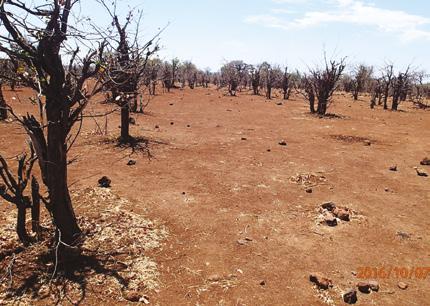
Zambezi National Park habitat destruction and consequent loss of biodiversity.

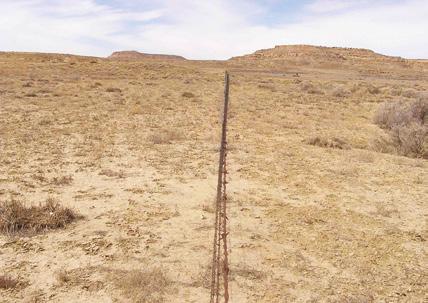
An example of ‘partial rest’, which is a counter-intuitive concept that results in severe desertification and loss of biodiversity.

Dimbangombe stabilising river banks and improving wildlife habitat. Allan Savory at the Dimbangombe College of Wildlife, Agriculture and Conservation Management – an accredited college by Zimbabwe’s Ministry of Education located just outside the Victoria Falls in Zimbabwe.

It is situated on a 19 500-acre (79km2) property and mainly used for research and training. It was established by Allan Savory’s Africa Centre for Holistic Management (ACHM) in 1998.
Dimbangombe Africa Centre for Holistic Management (Zimbabwe) river bank stability with regeneration of habitat for most wildlife. Some larger animals (buffalo and elephant) are shared with surrounding parks. This habitat improvement brought about by increasing animal numbers (using a land management herd of 500 cattle) and not by resting or reducing use.

Can you describe the difference between reductionist and holistic management since this would seem to be the crux of the matter?
Allan Savory: Management occurs at two levels: grassroots and policy, leading to laws and regulations that dictate management practices. The principle is the same at both levels. No management situation can avoid a web of great social/cultural, environmental and economic complexity. When we manage anything we do so by taking actions to achieve objectives – but before we take any action we need a reason, or context, for that action.
We do always have a reason of context for our actions. Think about this and you realise it is always things like – to meet a need, desire, make a profit or to deal with a problem. And that is too simplistic for management in a holistic world.
Even in cases where whole teams of highly trained specialists develop policy, and even when they are all fully aware that the policy will have social, environmental and economic consequences, the entire focus is reduced to the problem at hand, which is why conventional management is reductionist. It results in unintended consequences. For example, policies of governments, and environmental and development organisations, increases conflict. They fail to address the fact that people have different objectives.
The first two steps in Holistic Management are incredibly important because they help prevent conflicts.
1First, you establish what is being managed: ranch, farm, national park, ocean fishery or tropical forest? Development project or policy? Who makes the management decisions or develops the policy or project, and for whom? In doing this, we identify who have veto power: those who can just say no, and those who can mobilise public opinion. And we identify those who influence, or are influenced by, the management or policy, whose support we need.

African bush elephant (Loxodonta africana), Lower Zambezi National Park. Photo © Gudkov Andrey.
2Second, we gather together the managers, including those with veto power and those public opinion influencers to develop what is known as a holistic context. It’s new: the idea of one single holistic context for any management or policy.
The holistic context is a deeply thought out and agreed statement of how people want their lives to be: based on their culture and values. How they want their lives to be is then tied to their life-supporting environment: not as it is today but in the healthy condition it will have to be hundreds of years from now, for their descendants to be living similar lives.
Throughout this process there is no discussion of objectives, problems or actions. The people who develop the holistic context have to be in total agreement on the context before any objectives or actions are considered. Only in the light of that holistic context can any idea or solution be judged wise or unwise. Achieving total agreement on the holistic context without any compromise resolves or prevents conflict. This I have experienced even in cases of severe and angry disagreement where people began by stating emphatically that agreement in their community was impossible.
Over many years of helping people to develop their own holistic context I have yet to find disagreement. What a poacher wants and what the head of the WWF wants do not greatly differ. The holistic context is 0% how to achieve the ideal desired and 100% what people want.
Once you develop the holistic context you then get on with managing much as you do today. You still have objectives to meet, profits to make, problems to deal with, etc. You consider many factors, such as past experience, research results, expert opinion, cash flow, profitability or friends’ advice. But before any decision is finalised, ask yourself if your actions are socially, environmentally and economically in context, your own holistic context?
This also involves using the latest science; but, when new actions affect the environment, no matter the backing by research, we assume we could be wrong and establish a feedback loop and monitoring to make the management proactive rather than adaptive or reactive, as practised for centuries.
That, briefly, is Holistic Management. It is rapidly teachable and, in more than half a century of training people – from those with doctorates to non-literate villagers – I have never yet found that ignorance blocks learning. I have often seen how our knowledge, beliefs and egos block learning. And that starts with me. My years of struggle to develop a management process that would produce consistently sound results were almost entirely due to what I knew from university training. It stopped me seeing the obvious. I had to learn to set ego aside – to strive for something beyond any concern for self and be willing to acknowledge mistakes.

Allan Savory at ACHM, Zimbabwe.
What would you do differently today, as a game rancher? What advice would you offer game ranchers in southern Africa?
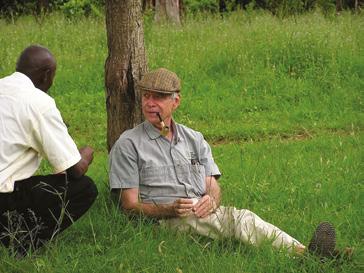
Allan Savory: Archie Mossman and Ray Dassman (both US Fullbright Scholars at the time) and I were involved at the infancy of today’s game ranching. I’m aware of the original concept we envisioned of ranching game in situ in the wild, and how it has shifted to largely managing captive populations in fenced areas. I am also aware and appreciate the fact that it has become the enormous industry that has saved, for the moment, many animals on large areas of land in southern Africa.
My main advice would be, first, to avoid the path of concentrating on increasing income per animal rather than income per area of land. This has been the tragedy of cattle ranching; it is not wise to go down the same path now that we know better. Millions of rand has been spent on cattle industry breeding and feeding programmes; it has done little for the industry, while the few ranches managing holistically have made enormous strides, as Dr Andre Mentz has pointed out in his writings. Cattle ranchers who practise Holistic Management are seeing dramatic increases in profitability, and documented regeneration of the land and biodiversity; so, too, can wildlife ranchers.
Second, wildlife ranchers would be wise to act decisively to prevent unethical hunting behaviour or anything but the highest standards of humane animal respect and treatment. There is a large and expanding resistance to red meat and trophy and safari hunting. This growing movement is led by hundreds of wealthy celebrities;
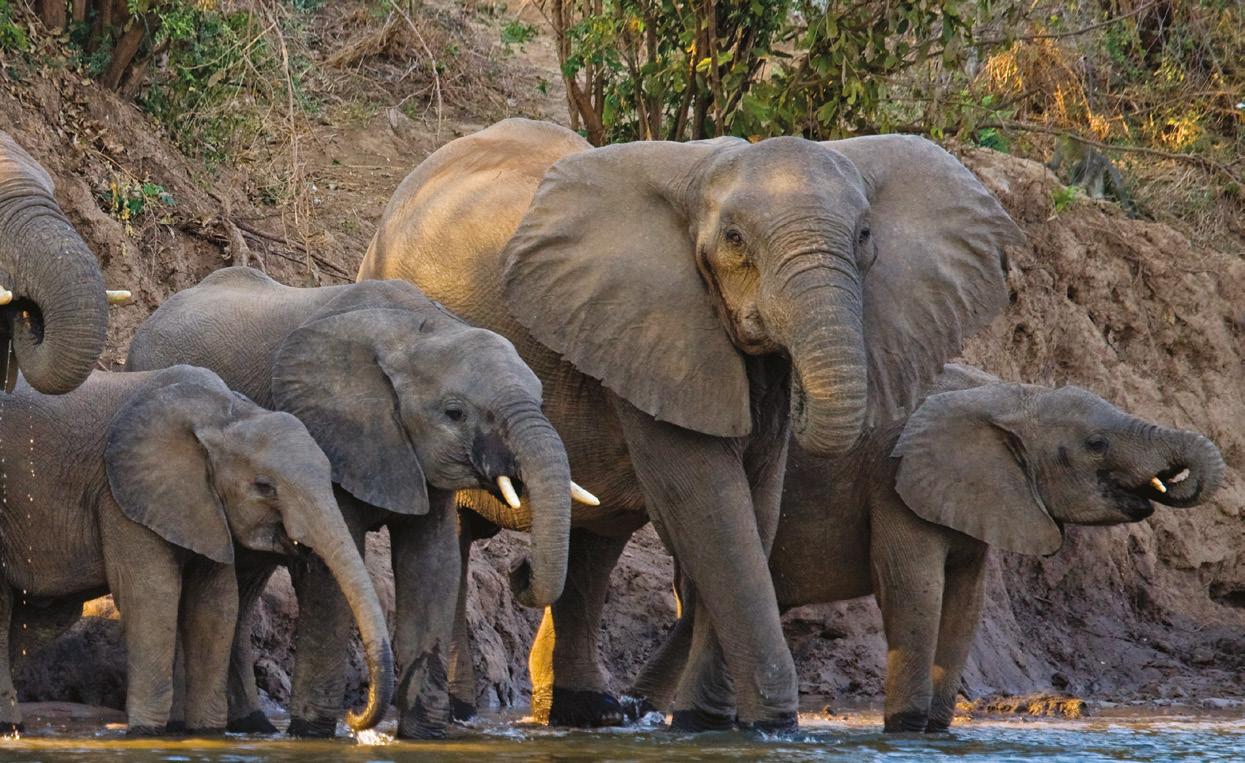
the flames of this revolt are being fanned by the cattle industry and some in the wildlife ranching industry. I provided the keynote talk at this year’s World Meat Conference in Uruguay and made this point to that industry. They are building opposition to killing animals or eating meat when nothing but large grazing animals are going to enable us to reverse global desertification and seriously address climate change.
Finally, I would urge all wildlife ranchers to shift from reductionist management to Holistic Management. It enables you to solve the issues above rapidly and profitably, and to bring all of the public into supporting your industry. The best hope future generations have of saving elephant, rhino and other animals in the wild is with the full support of the people living among them.
One way to speed up such a movement would be for wildlife ranchers to develop a Holistic Management hub, joining the network of hubs around the world, a place where all can learn together rapidly and benefit the entire industry and all wildlife ranchers. The Savory Institute will provide all the assistance it can, including training materials and network connections with others struggling with related issues.
Photo © Gudkov Andrey.
For more information and reference sources:
1. Read the third edition of Allan
Savory’s book Holistic Management:
A Commonsense Revolution to
Restore Our Environment. Island
Press 2016. Available from Amazon or from The Savory Institute. 2. Visit the SI website with a mass of self-help learning/training materials: savory.global

